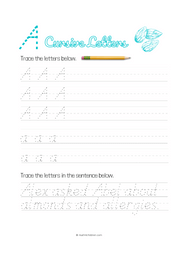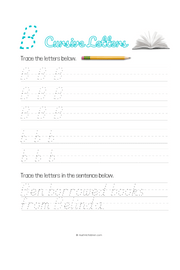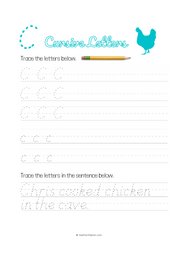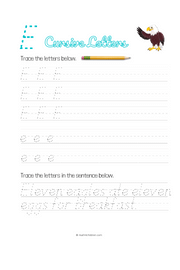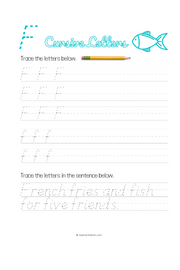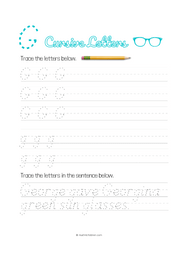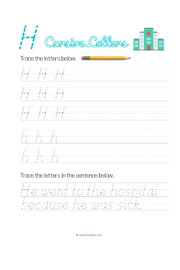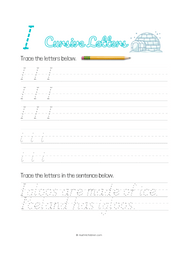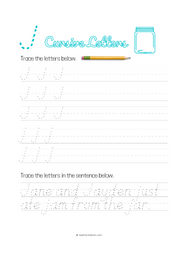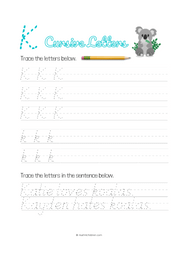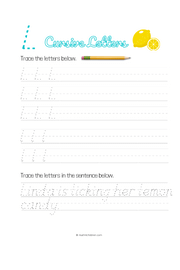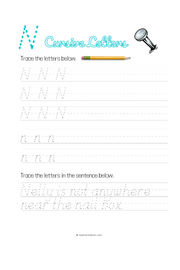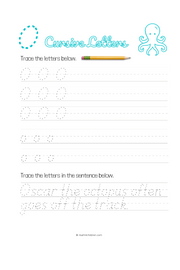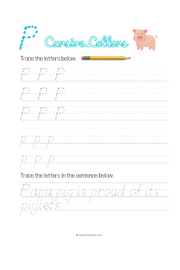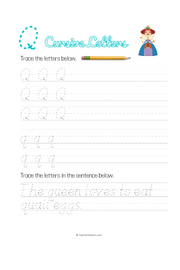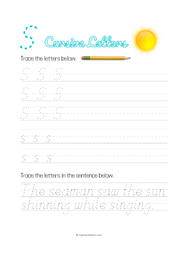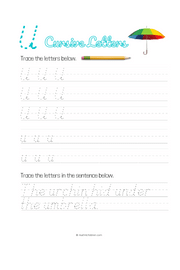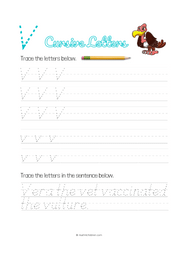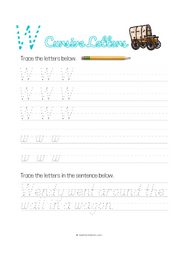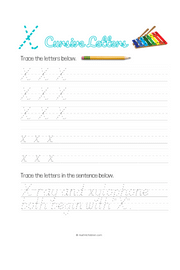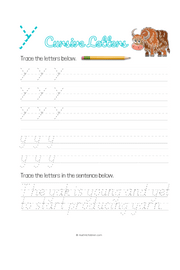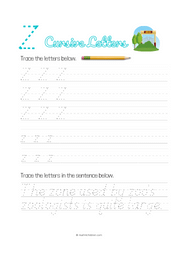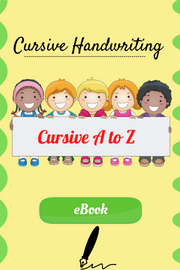The Alphabet of Sign Language: A Guide to Communicating with the Deaf
Sign language is a visual language that enables communication among individuals who are deaf or hard of hearing. It is a rich and expressive form of communication that has its own unique alphabet. The alphabet of sign language, often referred to as the manual alphabet or fingerspelling, plays a crucial role in spelling out words, names, and phrases using hand gestures. In this article, we will explore the fascinating world of the alphabet of sign language, its importance, and how it enhances communication for the deaf community. Continue Reading Below >>
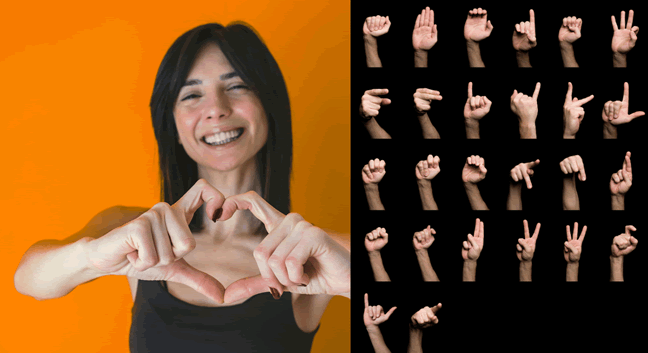
1. Introduction to Sign Language
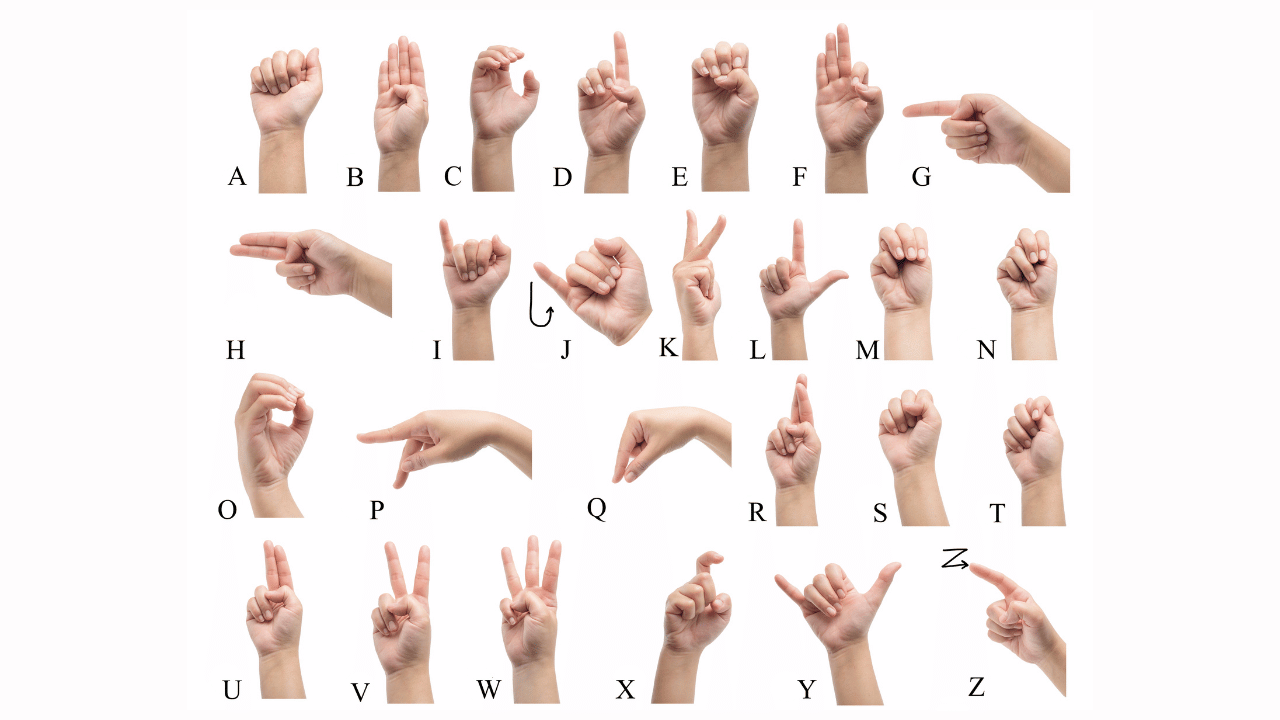
Sign language is a unique form of communication that uses visual gestures and movements instead of spoken words. It is primarily used by deaf and hard-of-hearing individuals to express themselves and interact with others. Sign languages have their own grammar and vocabulary, and they vary from country to country.
In sign language, communication is facilitated through a combination of handshapes, facial expressions, body movements, and sometimes even lip patterns. Each sign represents a word, concept, or phrase. The signs are typically produced in a specific location or within a signing space around the body.
Sign languages are complete and complex languages with their own syntax and grammar rules. They can convey the same depth of meaning and linguistic richness as spoken languages. Just as spoken languages have regional variations and dialects, sign languages also have variations based on geographic location and cultural influences.
Sign language plays a crucial role in the deaf community, allowing individuals to communicate, express emotions, and participate fully in social, educational, and professional activities. It provides a means for deaf people to connect with each other and with the hearing world.
Learning sign language can be a rewarding experience, as it enables effective communication with deaf individuals and promotes inclusivity. Many countries have developed formalized sign language systems and provide resources for learning them. There are also numerous online courses, books, and instructional videos available to help individuals learn sign language.
Overall, sign language is a vibrant and expressive form of communication that bridges the gap between the hearing and deaf communities, fostering understanding and inclusivity.
2. What is the Alphabet of Sign Language?
The alphabet of sign language is a manual system used to spell out words and convey individual letters using hand shapes. It serves as a foundation for learning sign language and is an essential tool for effective communication. By using specific hand configurations, signers can represent each letter of the spoken language, allowing for the expression of words, names, and phrases that may not have a standard sign.
The Alphabet of Sign Language, also known as the Manual Alphabet or Fingerspelling, is a system used in sign languages to represent the letters of a spoken language using handshapes. The specific signs for each letter may vary slightly depending on the sign language being used, as different countries and regions have their own sign languages.
In American Sign Language (ASL), which is one of the most widely used sign languages in North America, the Manual Alphabet consists of 26 distinct handshapes representing the 26 letters of the English alphabet. Here is the ASL Manual Alphabet:
A: The index finger is extended and the thumb is tucked into the palm.
B: The thumb is extended, and the other fingers are closed.
C: The thumb and the middle finger are extended, while the other fingers are closed.
D: The thumb, index finger, and middle finger are extended, while the other fingers are closed.
E: All fingers are closed.
F: The thumb and the index finger are extended, while the other fingers are closed.
G: The thumb and the little finger are extended, while the other fingers are closed.
H: The thumb, index finger, and middle finger are extended, while the other fingers are closed.
I: The index finger is extended, and the other fingers are closed.
J: The little finger is extended, and the other fingers are closed.
K: The index finger and the middle finger are extended, while the other fingers are closed.
L: The thumb, index finger, and middle finger are extended, while the other fingers are closed.
M: The thumb and the little finger are extended, while the other fingers are closed.
N: The thumb and the index finger are extended, while the other fingers are closed.
O: All fingers are extended.
P: The thumb and the middle finger are extended, while the other fingers are closed.
Q: The thumb and the little finger are extended, while the other fingers are closed.
R: The index finger and the middle finger are extended, while the other fingers are closed.
S: The thumb and the little finger are extended, while the other fingers are closed.
T: The index finger is extended, and the other fingers are closed.
U: The index finger and the middle finger are extended, while the other fingers are closed.
V: The index finger, the middle finger, and the ring finger are extended, while the other fingers are closed.
W: The thumb and the little finger are extended, while the other fingers are closed.
X: The index finger and the little finger are extended, while the other fingers are closed.
Y: The thumb and all fingers except the index finger are closed.
Z: The thumb and all fingers except the little finger are closed.
It's important to note that sign languages can have different manual alphabets based on the spoken language they are used with, so the specific signs for letters may vary in other sign languages.

3. History and Development of the Sign Language Alphabet
The history and development of sign language alphabets vary across different countries and regions. Sign language alphabets are manual systems used to represent the letters of a written language through handshapes and movements. These alphabets are commonly used by deaf individuals and those who communicate using sign languages.
One of the earliest recorded instances of a sign language alphabet dates back to the 16th century, attributed to Pedro Ponce de León, a Spanish Benedictine monk who taught deaf individuals to communicate using signs. However, sign language alphabets as we know them today have evolved significantly over time.
In the 18th century, the Abbé de l'Épée, a French Catholic priest, developed a manual alphabet to support the education of deaf individuals. His system, known as Old French Sign Language, involved assigning specific handshapes to represent each letter of the French alphabet. This manual alphabet became widely adopted and formed the basis for many sign languages around the world.
Later, in the early 19th century, Thomas Hopkins Gallaudet, an American educator, traveled to Europe to learn about methods for educating deaf individuals. While in Europe, he met Laurent Clerc, a deaf teacher who used the French sign language alphabet. Gallaudet brought Clerc back to the United States, and together they established the first permanent school for the deaf in Hartford, Connecticut, known as the American School for the Deaf. The French manual alphabet was introduced to the United States and gradually adapted to suit the English language. This adaptation gave rise to what is now known as the American Sign Language (ASL) alphabet.
Over time, sign language alphabets have continued to evolve and differ across countries. Although many alphabets are based on the French or American models, variations have emerged to reflect the unique phonetic structures and languages of different regions. For instance, the British Sign Language (BSL) alphabet differs from ASL in terms of handshapes and some letter representations.
It is important to note that sign language alphabets are not the primary means of communication for deaf individuals. Sign languages have their own grammatical structures, vocabulary, and syntax, and rely on visual-gestural communication rather than being a direct translation of a spoken or written language.
Today, sign language alphabets continue to be used as a tool for fingerspelling names, places, and words that may not have a conventional sign in a given sign language. However, it is crucial to recognize that sign languages are complete and independent languages in their own right, with rich cultural and linguistic traditions that go far beyond a simple manual alphabet.
4. American Sign Language (ASL) Alphabet
The American Sign Language (ASL) alphabet is one of the most widely recognized sign language alphabets. It consists of 26 letters, each represented by a specific handshape. ASL is primarily used in the United States and parts of Canada and is recognized as a distinct language with its own grammar and syntax.
A - Make a fist with your thumb resting on top of your fingers.
B - Extend your thumb and pinky finger while keeping your other fingers folded.
C - Curve your fingers and tuck your thumb under your fingers.
D - Extend your thumb, index finger, and middle finger while keeping your other fingers folded.
E - Extend all of your fingers and tuck your thumb under your fingers.
F - Extend your thumb, index finger, and middle finger, keeping your other fingers folded.
G - Make a fist with your thumb resting on the side of your index finger.
H - Make a fist and extend your thumb straight up.
I - Point your index finger straight up.
J - Make a fist and extend your pinky finger straight up.
K - Make a fist and extend your index and middle fingers straight up.
L - Extend your thumb, index finger, and middle finger and keep your other fingers folded.
M - Make a fist and extend your thumb and pinky finger.
N - Make a fist and extend your thumb and index finger.
O - Make a circle with your thumb and index finger, keeping your other fingers folded.
P - Extend your thumb and pinky finger, keeping your other fingers folded.
Q - Extend your thumb, index finger, and pinky finger, keeping your other fingers folded.
R - Make a fist and extend your index finger and thumb.
S - Extend your thumb, index finger, and middle finger and keep your other fingers folded.
T - Extend your thumb and index finger, keeping your other fingers folded.
U - Make a fist and extend your index finger and pinky finger.
V - Make a fist and extend your index finger and middle finger.
W - Make a "W" shape with your thumb, pinky finger, and middle finger.
X - Cross your index finger and middle finger.
Y - Extend your thumb, index finger, and pinky finger, keeping your other fingers folded.
Z - Make a zigzag motion with your index finger.
Note: The descriptions provided are simplified explanations of the handshapes. It is recommended to consult visual resources or learn from a certified ASL instructor for accurate representation and proper usage of the ASL alphabet.
5. British Sign Language (BSL) Alphabet
British Sign Language (BSL) has its own unique alphabet, similar to ASL. The BSL alphabet consists of 26 letters represented by specific handshapes. BSL is used in the United Kingdom and is recognized as a separate language from ASL, with its own regional variations.
6. International Sign (IS) Alphabet
International Sign (IS) is a sign language used by deaf individuals from different countries to communicate with each other. Due to its international nature, IS incorporates elements from various sign languages, including a modified form of the sign language alphabet that allows for cross-cultural communication.
Here is the IS Alphabet:
A: Thumb extended and slightly curved, other fingers closed.
B: Thumb extended and tucked under fingers.
C: Thumb and pinky extended, other fingers closed.
D: Thumb and index finger extended and touching at tips, other fingers closed.
E: Thumb and middle finger extended and touching at tips, other fingers closed.
F: Thumb and index finger extended and touching at tips, other fingers closed, with middle finger extended and touching the thumb.
G: Thumb extended and touching the tip of the pinky, other fingers closed.
H: Thumb and pinky extended and touching at tips, other fingers closed.
I: Thumb and pinky extended and slightly spread apart, other fingers closed.
J: Thumb and pinky extended and slightly spread apart, with index finger extended and touching the thumb, other fingers closed.
K: Thumb extended and tucked under middle finger, other fingers closed.
L: Thumb and index finger extended and touching at tips, other fingers closed, with middle finger extended and touching the thumb.
M: Thumb and index finger extended and touching at tips, other fingers closed, with middle finger extended and touching the thumb, and ring finger extended and touching the middle finger.
N: Thumb and index finger extended and touching at tips, other fingers closed, with middle finger extended and touching the thumb, ring finger extended and touching the middle finger, and pinky extended and touching the ring finger.
O: All fingers extended and spread apart.
P: Thumb extended and tucked under index finger, other fingers closed.
Q: Thumb extended and tucked under index finger, with middle finger extended and touching the thumb, other fingers closed.
R: Thumb extended and tucked under index finger, with middle finger extended and touching the thumb, and ring finger extended and touching the middle finger, other fingers closed.
S: Thumb extended and tucked under index finger, with middle finger extended and touching the thumb, ring finger extended and touching the middle finger, and pinky extended and touching the ring finger, other fingers closed.
T: Thumb extended and tucked under index finger, with index finger extended and touching the thumb, other fingers closed.
U: Thumb extended and tucked under index finger, with index finger extended and touching the thumb, and middle finger extended and touching the index finger, other fingers closed.
V: Thumb extended and tucked under index finger, with index finger extended and touching the thumb, middle finger extended and touching the index finger, and ring finger extended and touching the middle finger, other fingers closed.
W: Thumb extended and tucked under index finger, with index finger extended and touching the thumb, middle finger extended and touching the index finger, ring finger extended and touching the middle finger, and pinky extended and touching the ring finger, other fingers closed.
X: Thumb and index finger crossed at tips, other fingers closed.
Y: Thumb and index finger extended and touching at tips, with middle finger extended and touching the thumb, other fingers closed.
Z: Thumb and index finger extended and touching at tips, with middle finger extended and touching the thumb, ring finger extended and touching the middle finger, other fingers closed.
Please note that the descriptions provided here are just general guidelines for each letter. The actual handshapes and movements may vary slightly depending on the individual's preferences and regional variations.
7. Benefits of Learning the Sign Language Alphabet
Learning the sign language alphabet offers numerous benefits, both personally and professionally. It enhances communication and fosters inclusivity by enabling individuals to spell out words, names, and phrases when signs for specific concepts are not available. It also promotes understanding and empathy towards the deaf community, creating a more inclusive and accessible society.
Learning the sign language alphabet, also known as fingerspelling, can offer several benefits. Here are some of them:
-
Improved communication: Knowing the sign language alphabet allows you to communicate with individuals who are deaf or hard of hearing. It enables you to spell out words and convey messages more effectively, bridging the communication gap and promoting inclusivity.
-
Enhanced social interactions: Learning sign language alphabet opens doors to meaningful interactions with members of the deaf community. It allows you to engage in conversations, make new friends, and build relationships based on mutual understanding and respect.
-
Increased accessibility: By mastering the sign language alphabet, you contribute to making society more accessible for individuals who are deaf or hard of hearing. You can assist them in accessing important information, such as street signs, public notices, or written materials, by fingerspelling the relevant words.
-
Career opportunities: Knowledge of sign language and the alphabet can broaden your career prospects. You may find employment in fields that directly involve working with the deaf community, such as interpreting, education, social work, or healthcare. Your ability to communicate using sign language can give you a competitive edge in these professions.
-
Cognitive benefits: Learning the sign language alphabet engages your brain in a unique way. It stimulates visual perception, spatial awareness, and motor skills as you learn to recognize and reproduce various hand shapes. This can have positive effects on memory, attention, and overall cognitive function.
-
Cultural appreciation: Sign language is an integral part of deaf culture. By learning the sign language alphabet, you gain a deeper understanding of this rich cultural heritage. You become more aware of the unique experiences, history, and traditions of the deaf community, fostering cultural appreciation and sensitivity.
-
Personal growth: Learning any new language expands your horizons and promotes personal growth. By investing time in learning the sign language alphabet, you develop patience, perseverance, and adaptability. It can also challenge preconceived notions about communication and broaden your perspective on diverse ways of expression.
In summary, learning the sign language alphabet offers numerous benefits, ranging from improved communication and increased accessibility to career opportunities and personal growth. It promotes inclusivity, fosters meaningful connections, and contributes to a more inclusive and diverse society.
8. How to Learn the Sign Language Alphabet
Learning the sign language alphabet requires practice and dedication. There are various resources available, including online tutorials, videos, and courses that provide step-by-step instructions on each letter's handshape and movement. It is essential to practice regularly and interact with the deaf community to gain fluency and improve comprehension.
9. Common Challenges in Learning the Sign Language Alphabet
While learning the sign language alphabet can be a rewarding experience, it does come with its own set of challenges. One common challenge is the mastery of specific handshapes and their associated movements. Additionally, understanding the context and nuances of sign language requires time and practice. Patience and perseverance are key when overcoming these obstacles.
When learning the sign language alphabet, there are several common challenges that learners may encounter. These challenges can vary from person to person, but here are some commonly experienced difficulties:
-
Finger dexterity: Sign language involves using your hands and fingers to form specific handshapes and movements. Some learners may struggle with the fine motor skills required to accurately reproduce these handshapes.
-
Memorization: Like any alphabet system, learning the sign language alphabet requires memorizing the handshapes and corresponding letters. Remembering the different handshapes and their associations can be challenging for some learners.
-
Spatial awareness: Sign language uses space and movement to convey meaning. Learners need to develop an understanding of how signs are positioned in space and how movements contribute to the meaning of signs. This spatial awareness can be challenging for some individuals.
-
Hand dominance: Similar to writing with the dominant hand, sign language often requires the use of a dominant hand for producing signs. Learners who are ambidextrous or have a non-dominant hand may find it challenging to coordinate their non-dominant hand with the correct handshape.
-
Facial expressions and non-manual markers: In addition to handshapes and movements, sign language relies on facial expressions, body movements, and other non-manual markers to convey meaning. Mastering these non-manual markers and integrating them into signing can be challenging for learners.
-
Speed and fluency: Initially, learners may need to sign slowly and consciously think about each letter and its corresponding sign. Building speed and fluency in signing takes practice and time.
-
Different sign language variations: It's important to note that sign language varies across different countries and regions. Learning a specific sign language alphabet may not be universally applicable, and learners might need to adapt to regional variations.
To overcome these challenges, learners can benefit from consistent practice, working with experienced sign language instructors or tutors, using visual aids and resources, joining sign language communities, and immersing themselves in sign language interactions whenever possible.
10. Sign Language Alphabet in Everyday Life
The sign language alphabet finds application in various aspects of everyday life. Individuals who are deaf or hard of hearing can use it to communicate their names, addresses, and other personal information. It is also utilized in situations where specific signs do not exist for certain words or phrases, allowing for effective communication in diverse contexts.
11. Sign Language Alphabet in Education
The sign language alphabet plays a crucial role in education for the deaf. It serves as a fundamental building block for learning sign language, enabling students to spell out words and phrases they encounter in their academic journey. Educators incorporate the sign language alphabet into their teaching methods, promoting bilingualism and enhancing communication skills.
12. Sign Language Alphabet in Healthcare
In the healthcare field, knowledge of the sign language alphabet is invaluable for medical professionals when communicating with patients who are deaf or hard of hearing. It allows for effective communication of important medical information, ensuring patients receive proper care and understanding their needs and concerns.
13. Sign Language Alphabet in Emergency Situations
During emergency situations, clear communication is vital. The sign language alphabet can be a lifeline for individuals who are deaf or hard of hearing, enabling them to convey critical information to emergency responders and seek assistance. Emergency personnel trained in sign language can use the alphabet to provide instructions and gather essential details.
14. Sign Language Alphabet in Entertainment and Media
The sign language alphabet has also found its way into the realm of entertainment and media. Sign language interpreters often use the alphabet to spell out names, titles, and song lyrics during performances, making events accessible to deaf and hard of hearing audiences. The presence of sign language interpreters in television programs and live events contributes to a more inclusive society.
15. Conclusion
The alphabet of sign language is a powerful tool that facilitates communication and fosters inclusivity for the deaf community. By learning the sign language alphabet, individuals can bridge the communication gap and create a more accessible world. Whether it's in everyday life, education, healthcare, emergency situations, or entertainment, the sign language alphabet plays a vital role in enabling effective and meaningful communication.
Frequently Asked Questions
-
Q: Is the sign language alphabet the same across all countries? A: No, sign language alphabets can vary across different countries and regions. Each country may have its own unique sign language alphabet.
-
Q: How long does it take to learn the sign language alphabet? A: The time it takes to learn the sign language alphabet depends on individual dedication and practice. With regular practice, one can become proficient in a relatively short period.
-
Q: Can the sign language alphabet be used for spelling any word? A: Yes, the sign language alphabet allows for spelling out words, names, and phrases. However, sign languages also have their own signs for many commonly used words and concepts.
-
Q: Are there any online resources available for learning the sign language alphabet? A: Yes, there are many online tutorials, videos, and courses available that provide instructions and practice exercises for learning the sign language alphabet.
-
Q: Is it important to learn the sign language alphabet if I want to communicate with the deaf community? A: Learning the sign language alphabet is a valuable foundation for communicating with the deaf community. It shows respect and effort to bridge the communication gap, but learning full sign language is even more beneficial for effective communication.

